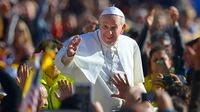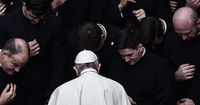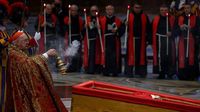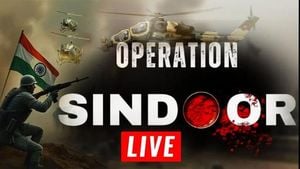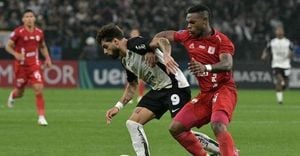As the world mourns the passing of Pope Francis, a complex tapestry of political and religious dynamics unfolds, highlighted by the attendance of U.S. President Donald Trump at the pontiff's funeral. Set for Saturday, April 26, 2025, in St. Peter's Square, the funeral will not only pay homage to the late pope but also serve as a stage for global leaders to navigate the intricate relationships shaped by Francis' progressive teachings and Trump's more conservative agenda.
Pope Francis, who died on April 21, 2025, at the age of 88, is remembered for his calls for unity and compassion, particularly towards marginalized communities. His final public address, delivered just a day before his death, echoed these sentiments, urging the world to embrace those in need. In stark contrast, Trump marked the Easter holiday with a scathing social media post aimed at his political adversaries, including references to "Radical Left Lunatics" and "WEAK and INEFFECTIVE Judges and Law Enforcement Officials." This juxtaposition of messages underscores the fraught relationship between the two leaders.
The Vatican is meticulously preparing for the funeral, which will feature a simple and sober ceremony per Francis' wishes. The event is expected to draw 170 international delegations, and the seating arrangements will be carefully orchestrated to avoid diplomatic tensions. Notably, Trump will not sit next to Ukrainian President Volodymyr Zelenskyy, who has requested a meeting with the U.S. leader during the funeral. This would mark their first face-to-face encounter since a contentious meeting earlier this year.
In the lead-up to the funeral, Trump has ordered U.S. flags to be flown at half-staff until sunset on the day of Francis' burial, honoring the pope's legacy. The funeral mass will begin at 10 a.m. local time in Rome, which translates to 4 a.m. on the East Coast of the United States. The Vatican will livestream the service, allowing millions around the globe to participate in mourning the pope.
The relationship between Trump and Francis has been marked by significant ideological differences, particularly regarding immigration, the environment, and poverty. In 2016, Francis criticized Trump’s proposal to build a wall along the U.S.-Mexico border, stating that anyone who does so is "not Christian." Trump responded by calling the pope's comments "disgraceful." Despite these differences, Trump has managed to garner support among American Catholics, winning the Catholic vote in the 2024 election with 54% of the vote compared to 44% for his opponent, Kamala Harris.
As the funeral approaches, the Vatican is also preparing for the subsequent conclave, which will convene to elect Francis' successor. This conclave is expected to begin in early May, following a period of mourning known as the "Novemdiales," which will last nine days. The College of Cardinals, which will elect the next pope, consists of 252 members, although only 135 are eligible to vote due to age restrictions.
In a significant departure from tradition, Pope Francis requested to be buried at the Basilica of Saint Mary Major, rather than the usual crypt at St. Peter's Basilica. This request reflects his desire for a simpler burial, consistent with his life and teachings. The funeral will follow a traditional Catholic mass, predominantly conducted in Latin, and will include specific papal rituals, such as the Swiss Guards kneeling during the consecration of the host.
Amidst the solemnity of the occasion, the geopolitical climate remains tense. Notable absences from the funeral include Russian President Vladimir Putin and Israeli Prime Minister Benjamin Netanyahu, both of whom are subject to international arrest warrants for war crimes. Their absence underscores the complexities of international relations, particularly in light of the ongoing conflicts that have characterized their leadership.
As leaders from around the world arrive in Rome, conversations are anticipated on the sidelines of the funeral. European Commission President Ursula von der Leyen has expressed a desire to speak with Trump, marking a potential thaw in relations amid ongoing trade tensions. The backdrop of the funeral provides a unique opportunity for dialogue among leaders who may otherwise remain at odds.
In the days following Francis' death, the Vatican has been actively managing the logistics of the funeral and the subsequent conclave. Cardinal Kevin Joseph Farrell, the Camerlengo of the Holy Roman Church, will oversee the confirmation of death and the preparation of the pope's body for burial. The rituals surrounding a papal funeral are steeped in tradition, with the Ordo exsequiarum Romani pontificis outlining the procedures to be followed.
While the funeral is a time for mourning, it also serves as a reminder of the enduring influence of the papacy and the Catholic Church. Pope Francis' legacy will likely shape the direction of the church for years to come, particularly as the new pope will inherit a diverse and complex global congregation.
The funeral of Pope Francis is not just an end but also a beginning, marking the transition to a new leadership era within the Catholic Church. As the world watches, the interplay of faith, politics, and diplomacy will unfold, highlighting the intricate relationships that define our global community.
